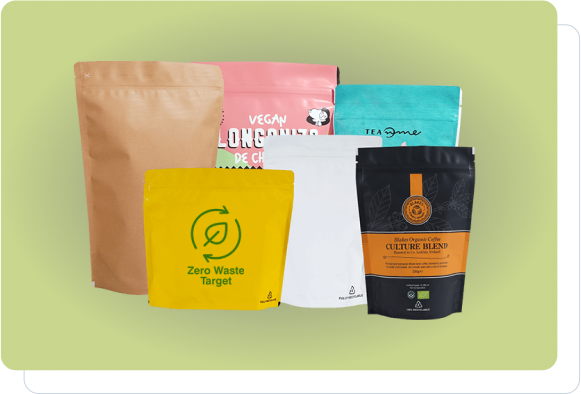Flexible packaging has become a new trend in packaging because it is versatile, sustainable, and efficient in packaging products. For instance, in the food industry, flexibility has introduced resealable pouches that provide consumers with extended shelf life than the traditional food packaging. Flexible packaging customization is considered as the key factor to respond to today’s market demands and distinguish the brand. In an effort to satisfy these needs, green and sustainable solutions have gained a lot of importance to businesses. This blog post focuses on the various possibilities of customization in flexible packaging and their role in the current packaging world.
Understanding Flexible Packaging
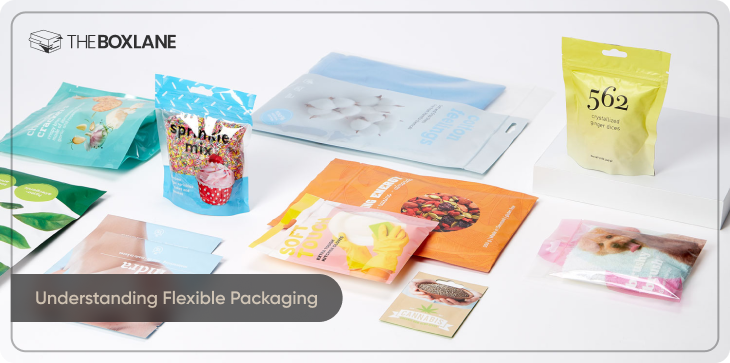
Flexible packaging: Definition and its Types
Flexible packaging defines packaging material types that can be bent and molded in different forms for packaging. They include pouches, bags, films and wraps with varieties to suit as many products as possible. These materials are also relatively low density and easy to maneuver and versatile in terms of product shape and size, which is why they are popular in so many industries.
Advantages Over Traditional Rigid Packaging

Flexible packaging offers several advantages over traditional rigid packaging:
- Lightweight and Portable: Better to transport and manage, ultimately lowering the cost of shipping.
- Reduced Material Usage and Production Costs: Conservation of materials results in reduction of costs and also leads to conservation of the environment.
- Enhanced Product Protection and Shelf Appeal: Flexible packaging offers good protection features for foods and other products, and eye-catching graphics to appeal to customers.
Market Growth Statistics
According to the MarketsandMarkards, the size of the global flexible packaging market in 2024 is USD 291.56 billion and is expected to reach USD 368.82 billion at a CAGR of 4.8% in the years 2024 to 2029. Such a growth is attributed to factors such as the growing consumer preference for easy-to-open and biodegradable packaging materials, the innovation in the material used in the flexible packaging, and the versatility of the flexible packaging across different markets including food and beverages, pharmaceuticals, and online shopping. This growth is attributed to the need to find new and efficient solutions in packaging that will be environmentally friendly.
Customization Options in Flexible Packaging
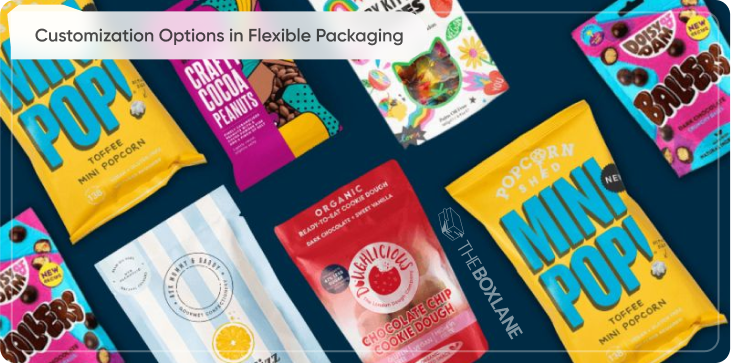
Design and Printing
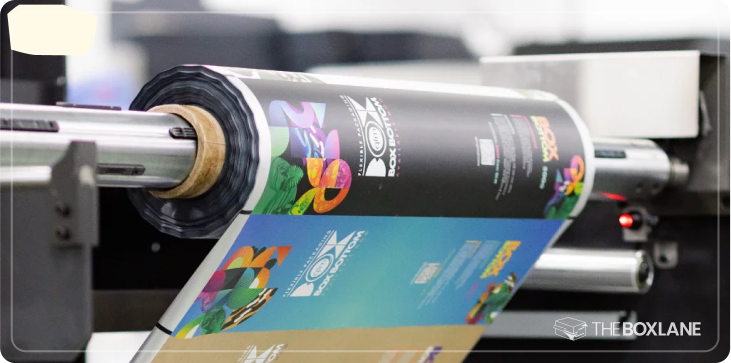
Custom Printed Mylar Bags
It is crucial for organizations to create brand identity in the market due to competition. It also provides a way of custom printing which helps make the products more attractive to consumers. For instance, a recent campaign by a premium snack brand incorporated high-definition digital printing on custom mylar bags in order to create a burst of visuals that included an attractive and interactive QR code that could take the customers to a dedicated recipe section. This not only increased the conspicuousness of the product on the shelf but also engaged customers through the content which also helps to build brand equity. Key techniques include:
- Digital Printing: Best used for small quantity production and large and detailed logos.
- Flexographic Printing: Economical in terms of large quantities.
- Rotogravure: Provides clear graphics for high quality packaging material.
Trends in Custom Printing
- Graphics that should be very clear, and memorable when looked at or used.
- Communicative QR codes that compel consumers and offer product details.
Flexible Packaging Design
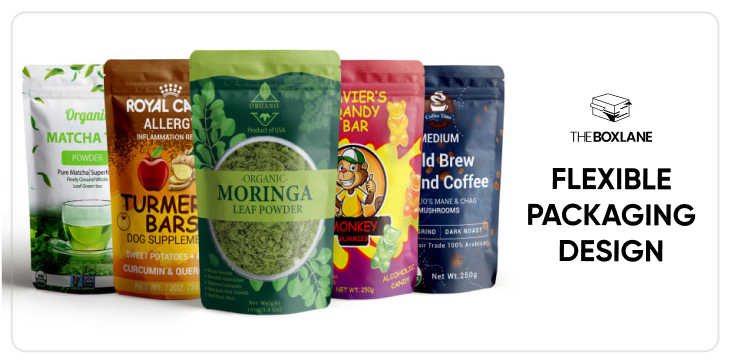
Depending on the type of product, packaging designs may also be specialised so that not only the functionality but the appearance also fits the expectation. Other customizable features include colors, fonts, and new design features that increase product exposure.
Material Selection
Eco-Friendly and Biodegradable Materials
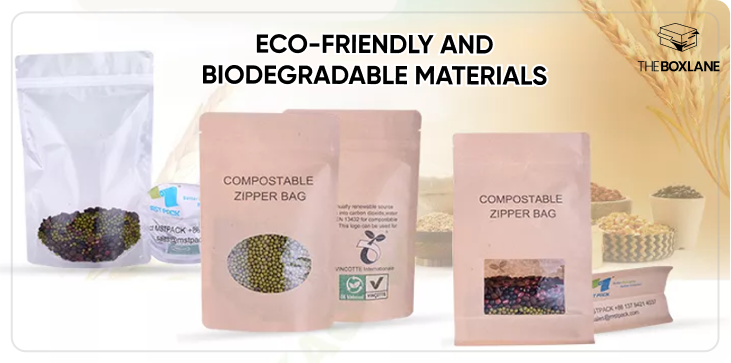
With the focus on sustainability management, more business entities are using sustainable materials such as bioplastics which come from renewable resources such as corn and sugarcane. That is why, despite the elevated cost of bioplastics compared to traditional plastics as a result of production peculiarities and limited supply, there is a growing demand for bioplastics as an environmentally friendly material that meets consumer preferences. Also, the increase in technology and the constant expansion of economies of scale have made them progressively more affordable and available. These materials are not only renewable, but they are also a good fit for consumers’ attitudes and beliefs.
- Fastest Growing Segment: Bioplastics, with a CAGR of 5.4% from 2024 to 2030 (Grand View Research).
Barrier Properties
The choice of materials is based on the requirement of shielding the products from moisture, oxygen and other deleterious substances in order to maintain product quality and durability. High-barrier films and laminates have been used extensively for the purpose of maintaining product integrity and freshness.
Functional Features
Resealable Closures, Spouts, and Handles
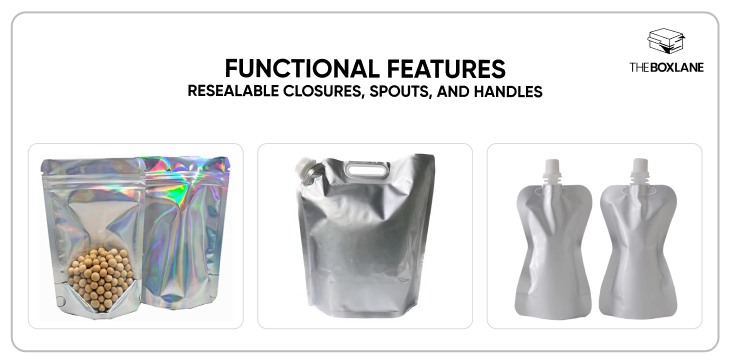
Closing mechanisms such as zippers or screw-on caps add utility, pour spouts prolong the shelf life of the product, and handles make the packaging portable.
Stand-Up Pouches and Mylar Bags
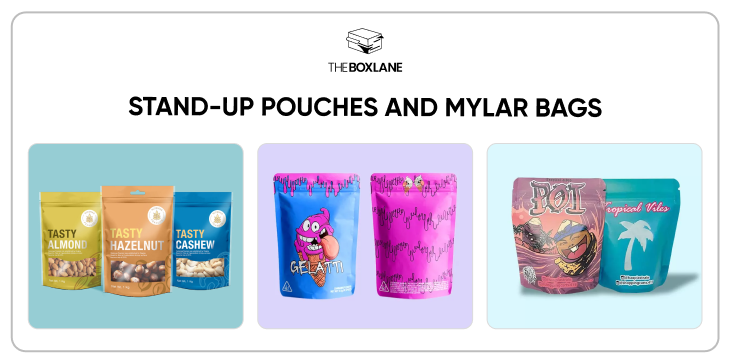
These types of mylar bags are loved for their flexibility and transportability and are usable in a multitude of different scenarios. They are great for shelf life and can be used with any product type – from chips to syrups.
Requirements for Flexible Packaging
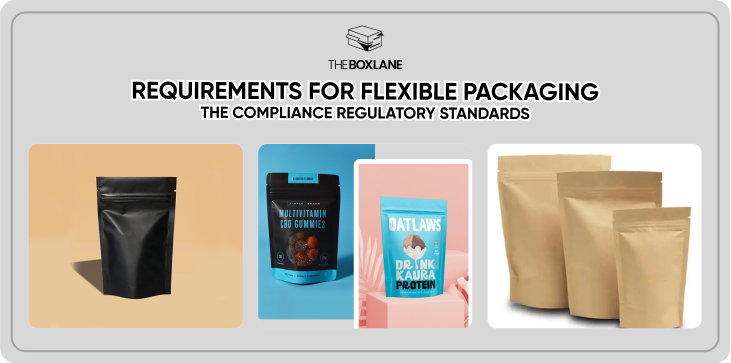
The compliance regulatory standards
Safety and quality compliance is extremely crucial, more so for food and drugs products. Compliance makes it possible to keep packaging materials harmless to consumers and meet the requirements of the industry.
Performance Criteria
Flexible packaging must be able to satisfy durability standards, ensure product freshness for longer periods, and ensure contents’ protection. Protective packaging that can be able to endure the handling and transportation tests is very essential for product safety.
Sustainability Considerations
Legal compliance and customer satisfaction with environmentally friendly practices are also getting higher. Apart from environmental benefits, sustainable packaging is a way to enhance brand performance.
Converted Flexible Packaging
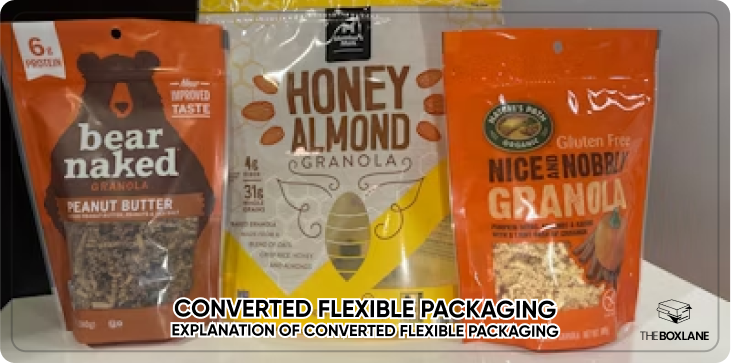
Explanation of Converted Flexible Packaging
Conversion entails using various production methods like cutting, lamination, and sealing, to turn material inputs into ready packs or packages. This process creates value by designing different packaging that meets the package requirements of certain products.
Benefits and Applications
Flexible packaging is easily converted for virtually any application, and can be used in food, cosmetic, and health care industries among others. The fact that this solution can be easily configured and used makes it a good solution for various uses.
Packaging Materials
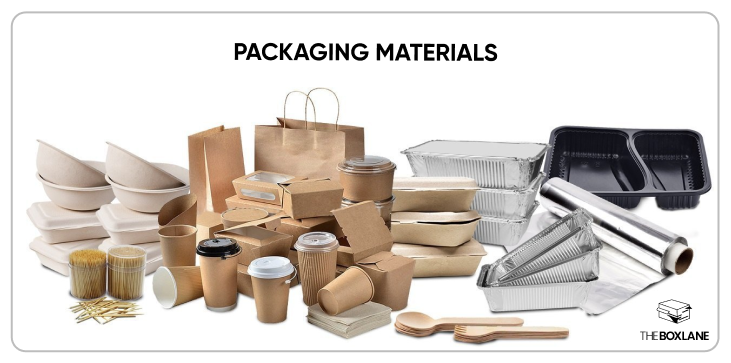
Common Materials Used
- Plastics: PET, LDPE and polypropylene are much used due to their strength and flexibility.
- Paper: People are becoming more conscious of, and embracing, opportunities for biodegradable and recyclable products.
- Metal Foils: Give good barrier protection for delicate products.
- Bioplastics: A green solution to the use of conventional plastics, providing environmentally friendly options.
Selection Criteria
Selecting materials depends on the product needs and the ideas on sustainability. Pores, coatings’ ability to provide a barrier against gases and moisture, and recyclability are considered when choosing the material.
Pouch Packaging
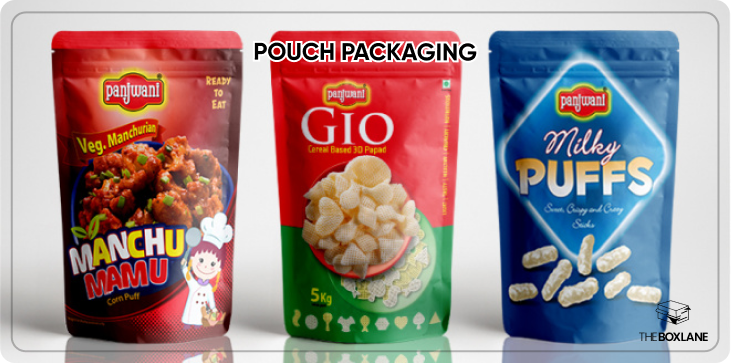
Types of Pouches
- Stand-Up Pouches: Especially prevalent in snacking and drinks because of the stability and resealability of their structures.
- Flat Pouches: Especially suitable for products that will be used only once such as sauces, and sachets of specific samples.
- Spouted Pouches: These are appropriate for products that are in liquid form such as juice, sauce among others.
Customization Options
The adaptability of flexible packaging means that sizes, shapes, and added features can be made to meet the product requirements of a certain product. These are: shapes, window, and child proof caps.
Packaging Films
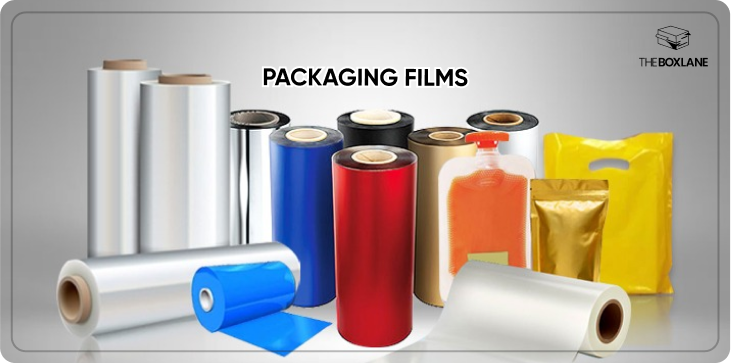
Role in Flexible Packaging
These films serve as protectants, preservatives and carriers of the products, which makes them an integral part of flexible packaging. Films are very diverse and can be applied in food products and even in industrial products.
Customization in Film Properties
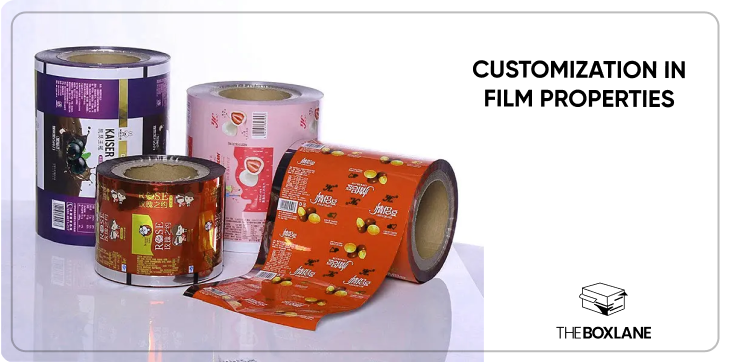
- Thickness: Accommodated in order to maintain both strength and elasticity.
- Barrier Levels: Intended for product-specific protection requirements, for example, antimicrobial or antioxidant.
- Material Composition: Choices of ecological and typical movies.
Stand-Up Pouches
Popularity and Advantages

Stand-up pouches have recently been adopted extensively due to their appearance and versatile usage. Being lightweight, shatter-proof and reseable, with capability of stand alone on shelf, they are the most preferred in the retail markets.
Customization Aspects
Stand-up pouches can be poly coated or metalized and come in a range of colors and styles including resealable zippers for branding and product differentiation. Features such as spouts and tear notches add on the usability of the product.
Sustainability aspects in Flexible Packaging
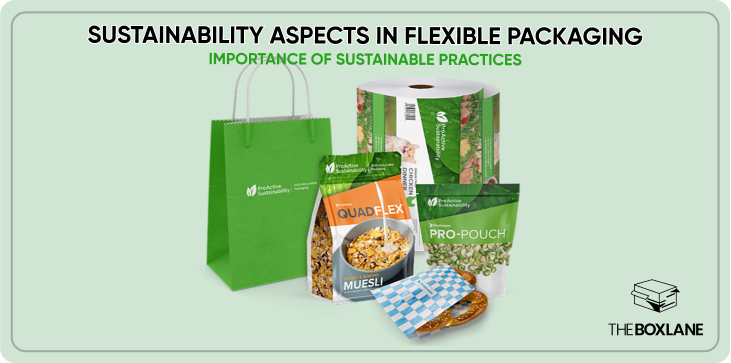
Importance of Sustainable practices
One of the trends in the packaging industry is sustainability as the audience prefers brands that adhere to the principles of the sustainable development concept. Contemporary research shows that as much as 74% of global consumers are willing to pay more for sustainable packaging, making green solutions popular. Concern for the environment is being implemented through use of friendly material and unique production procedures. There is a growing trend among consumers that they will go for brands that have sustainability as their priority policies.
Innovations in Eco-Friendly Materials
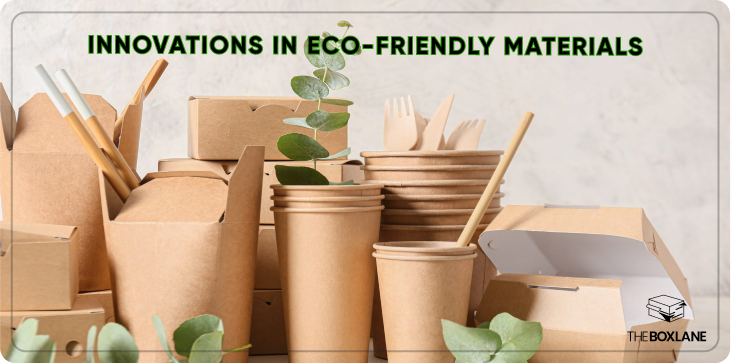
Current trends are filled with recyclable and biodegradable materials because customers prefer environmentally-friendly ones. Bioplastics and compostable films markets are developing rapidly and present new opportunities for sustainable packaging material.
Conclusion
The options provided by flexible packaging customization include the infinite possibilities that will help the business improve their branding, functional, and sustainable needs. All these options make it possible to achieve the necessary kind of packaging; starting from custom printed designs, to ecological materials.
The Box Lane offers you professional flexible packaging services, meeting your specific requirements. If you’re looking for an eco-friendly material, unique design or complex customization, The Box Lane is the right choice for your flexible packaging needs.


